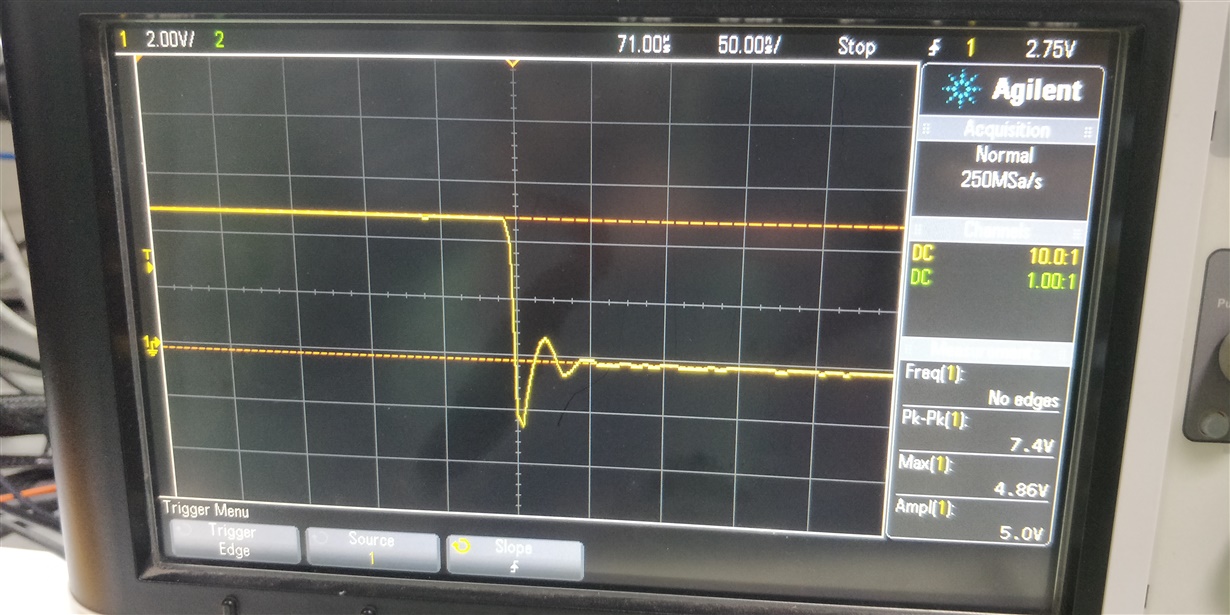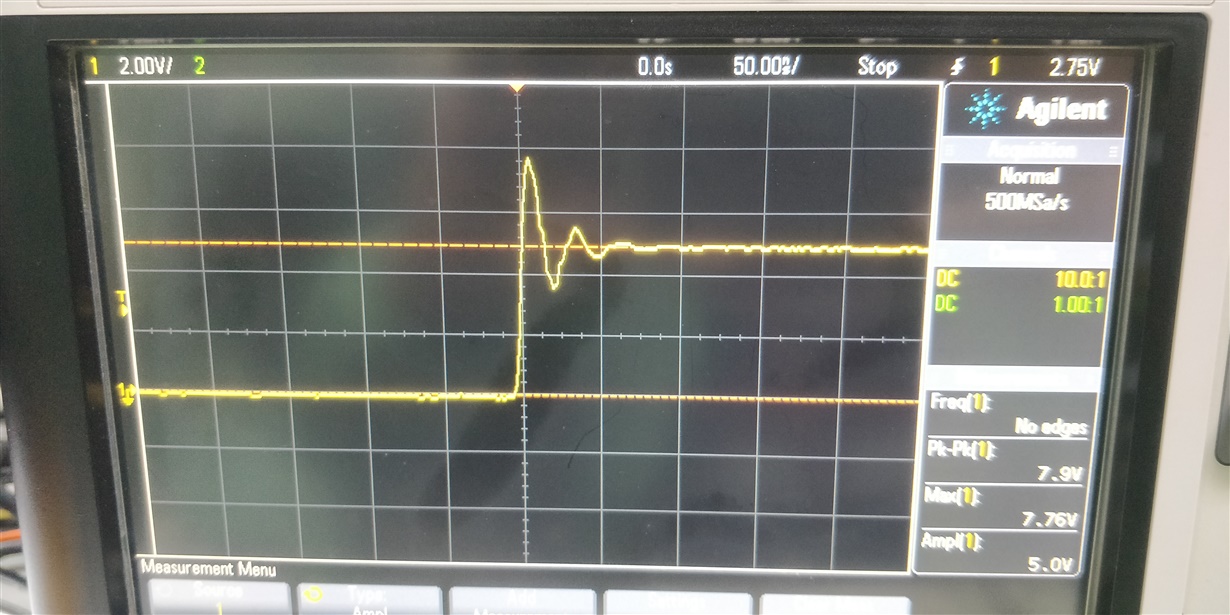Hello,
We are using the device TS5A3159MDBVREP for one of our application.
For the digital control input pin no 6 of the device there is a transient with the following spec.
While switching from 0 to 5V at 3KHz rate,
Peak Overshoot : 7.26V.
Peak Duration : 20nS
While switching from 5V to 0,
Peak Overshoot : -2V.
Peak Duration : 20nS
Refer attached images.
Kindly tell us the impact of this input signal transient on the reliability performance of the switch.
I cannot remove this transient from my actual test setup, does providing this transient damage the IC during long run or we can ignore this transient.

Does this clamping diodes will suppress this transient?

